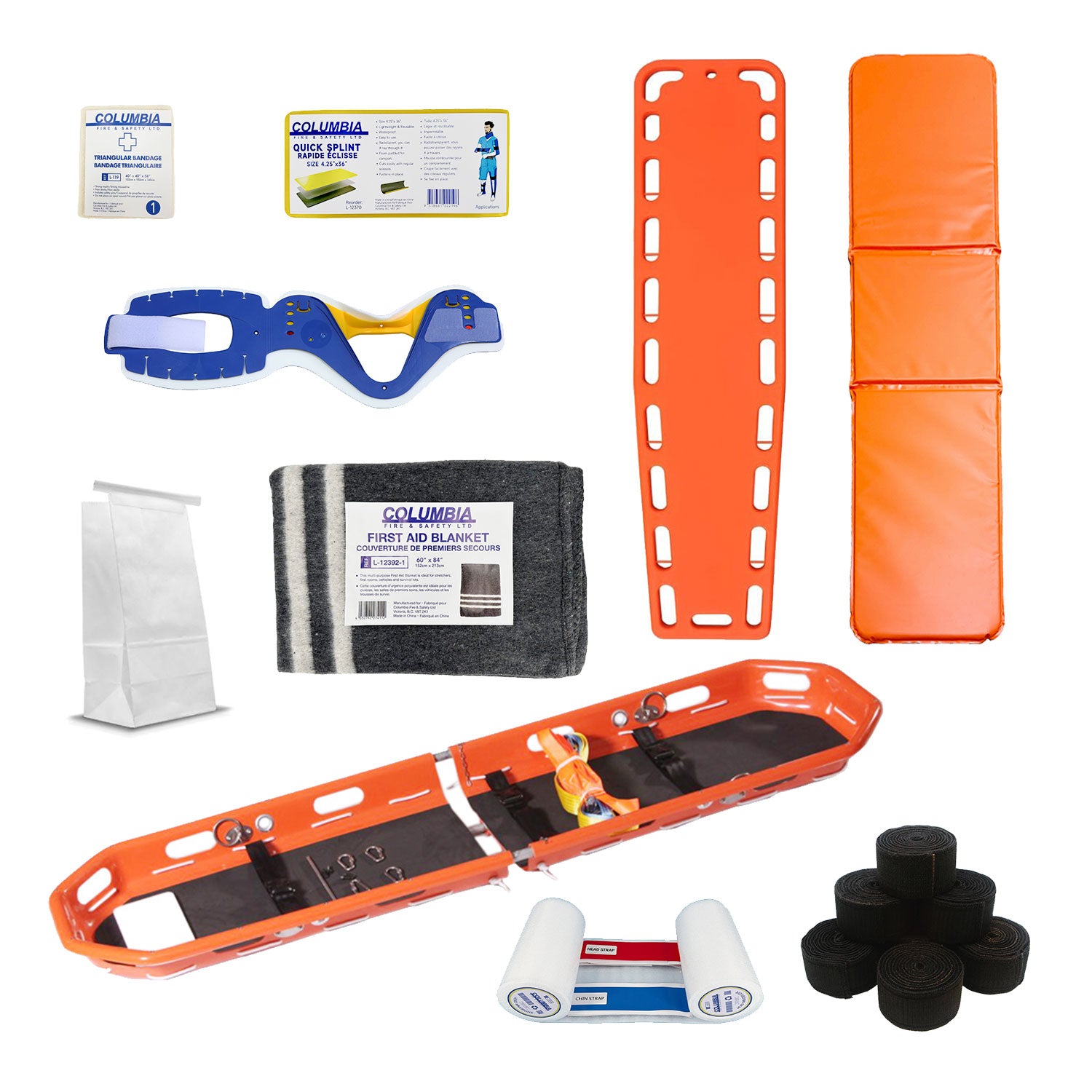WorkSafeBC Emergency Transport Vehicle (ETV) Equipment Kit
The WorkSafeBC Emergency Transport Vehicle (ETV) is designed to provide safe, timely transportation of injured workers from the scene of an incident to a medical facility or rendezvous point.
ETVs must comply with the
WorkSafeBC Occupational Health & Safety Regulation (Part 3)
and
WorkSafeBC Guidelines (G3.16)
regarding emergency transport, equipment, and communications.
Key WorkSafeBC Requirements
| Requirement |
Description |
| Response Time |
Vehicle must reach the scene or pickup location within 10 minutes. |
| Operator |
A driver should operate the vehicle; the first aid attendant should provide care. |
| Terrain |
Vehicle must handle the worksite’s terrain and be immediately available. |
| Protection |
Must shield the worker from dust, weather, and maintain a comfortable temperature. |
| Communication |
Must have two-way communication between driver, attendant, scene, and hospital. |
| Internal Space |
At least 1 metre (3.3 ft) of headroom in the patient compartment. |
Minimum Required ETV Equipment (WorkSafeBC Schedule 3-A)
| Equipment |
Notes |
| Hard cervical collars (adult sizes) or 2 adjustable collars + head immobilizer |
For spinal protection during transport. |
| Commercial lifting / transfer device |
With handholds, suitable for terrain and patient lifting. |
| Securing straps / restraints |
To secure the patient and stretcher safely in vehicle. |
| Spine board or stretcher |
Approx. 44 cm × 1.8 m × 2 cm, with padding and retention straps. |
| Padding / mattress |
To prevent excessive jarring during movement. |
| Blankets (min. 6) |
To maintain warmth and comfort. |
| Splints (2 × 1 m, padded) |
For immobilizing limb injuries. |
| Communication equipment |
Radio or phone link between driver, attendant, scene, and hospital. |
Implementation & Compliance Checklist
- Verify all components meet WorkSafeBC size, strength, and restraint requirements.
- Confirm ETV’s patient area provides ≥ 1 m headroom and secure stretcher mounts.
- Install reliable communication systems for internal and external coordination.
- Ensure heating/cooling is adequate and safe (especially when oxygen is present).
- Ensure first aid attendants hold a valid Occupational First Aid certificate with transportation endorsement.
- Conduct regular inspections, maintenance, and expiry checks on all equipment.
- Include emergency transport procedures in the written first aid plan
(WorkSafeBC First Aid Requirements).
- Conduct periodic mock transport drills and review after each incident or site change.
References

